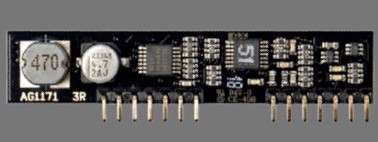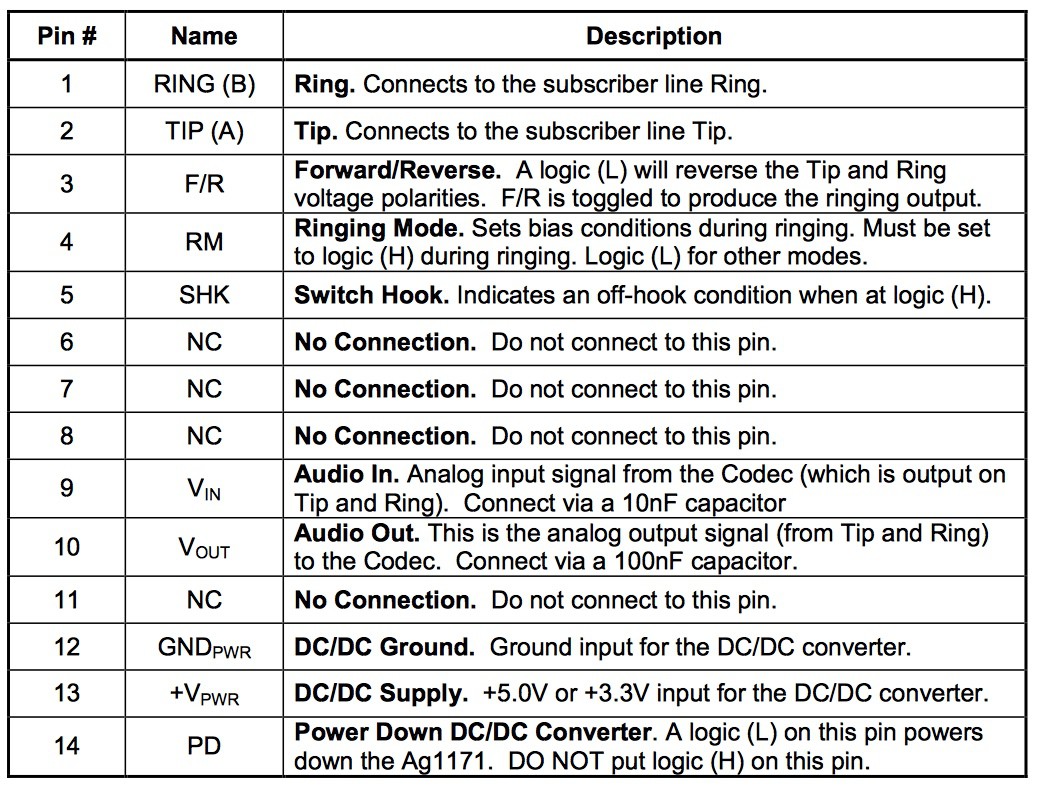Now let's meet the star of our show!
Presenting the Silvertel AG1171 Subscriber Line Interface Circuit!

Cool but what does it do?
Phone lines use the magic of analog to combine a variety of signals over a single pair of wires. Those two wires carry all the following:
- Audio into the phone
- Audio out of the phone
- -48v DC "battery" voltage
- 90v AC ring voltage
- (eventually) Data like Caller ID and DSL
Now for a fun diversion into telephony terminology:
- The phone company calls every phone number a Subscriber Line
- The phone company calls itself the Central Office
The Central Office houses the batteries which provide voltage to all the connected phones, and the human switchboard operators or mechanical switching equipment used to connect one line to another for calls. To make our phone work, we'll have to replicate everything the CO provides.
If you were thinking that sounds like a lot of work, or 90 volts AC sounds like a lot, you are correct! Ring voltage was originally supplied by hand-cranked magnetos and had to be strong enough to ring big heavy bells located far away. Today, it's an unusual voltage that's not trivial to generate. Plus, you don't want those volts getting into the rest of your circuit, which is probably a puny 3-5 volts.
Good News Everyone
Luckily, this problem has long been solved by SLICs like the AG1171 and many similar products.
These circuits can be found in stuff like VoIP adapters, where they enable the use of ordinary phones over internet based calling. The SLIC sits between the telephone and the rest the system, where it safely generates the necessary voltages for the phone to operate, as well as handling the audio in/outs.
The chip comes in a few different package sizes. We'll be using the 14 pin SIL (single in line) version. According to the datasheet, here's what the rest of the pins hook up to:

It's easy to get started:
- Pin 13 to V+ (3.3v-5v)
- Pin 12 to Gnd
- Pin 2 to phone line tip (green wire)
- Pin 1 to phone line ring (red wire) [note that tip and ring can be reversed without consequence]
At this point, when you apply power to the AG1171, the phone line will be live. If you try speaking into the telephone handset, you should hear sidetone in your earpiece.
 Steph
Steph
Discussions
Become a Hackaday.io Member
Create an account to leave a comment. Already have an account? Log In.
Just a heads up, but the link on silvertel.com/ag1171/ to their part on mouser.com brings up the AG1171S which is a different part than the AG1171. The AG1171S allows for a slightly broader voltage @ 3.1-5.5 with a operating supply current of 290mA.
Are you sure? yes | no